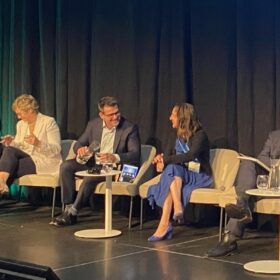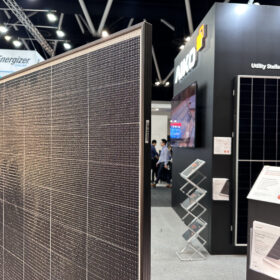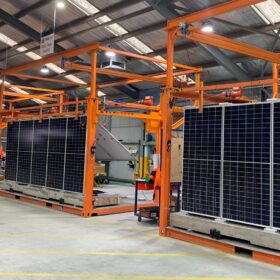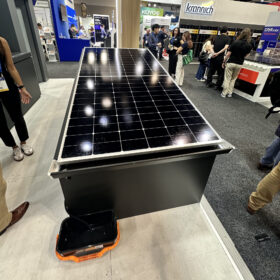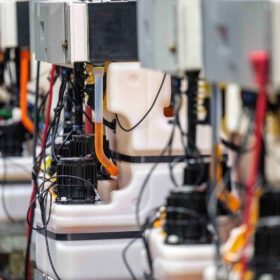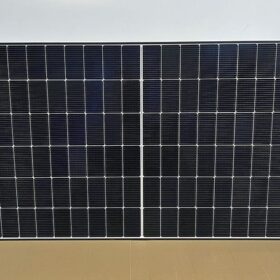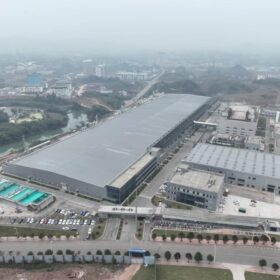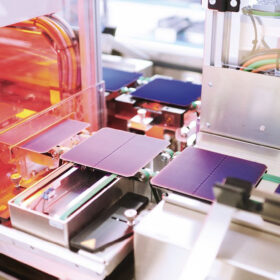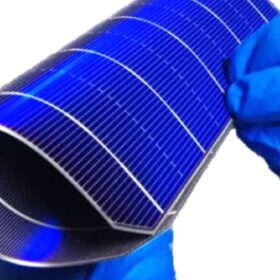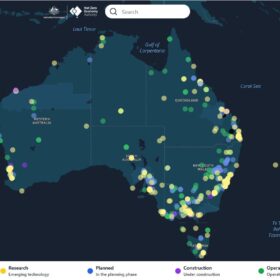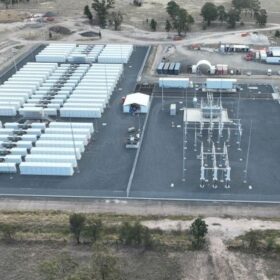REC launches 430 W heterojunction solar module with 22.2% efficiency
REC has developed a new series of residential heterojunction solar panels with efficiencies ranging from 20.6% to 22.2% and an operating temperature coefficient of -0.24% per degree Celsius.
Clean energy manufacturing sector urged to get a move on
Tindo Solar, the country’s only manufacturer of PV panels, has warned Australia must move quickly if it is to capitalise on the manufacturing opportunities presented by the global clean energy transition or risk being left behind.
Smart Energy Expo: 8.8kg glass-free module launched by China’s Aiko
Chinese solar manufacturer Aiko has introduced an ultra-lightweight 8.8kg module to the Australian market. Aiko has swapped solar glass for high chemical plastic, affording the 450W ‘Air Series’ module its light weight.
5B eyes Australian expansion as work on Indian production plant begins
Modular solar pioneer 5B has commenced construction of a potential giga-scale production facility in India that is to improve its access to international markets, but the Sydney-headquartered company remains committed to its manufacturing operations in Australia.
Smart Energy Expo: Longi launches anti-dust module for C&I segment
Chinese solar manufacturer Longi has launched a new ‘anti-dust’ module. The feature rests on its design where the frame sit flush with the glass on the short side, allowing water to wash off unimpeded.
Redflow secures government grant to drive flow battery development
Queensland-based battery company Redflow has secured up to $1.12 million in government funding to support the development of a large-scale zinc-bromine flow battery prototype and to examine the potential to establish a large-scale battery manufacturing facility in the state.
Leapton unveils 585 W TOPCon solar panel with fiberglass frame
Leapton says its new panels have a temperature coefficient of -0.30% per C and an efficiency of up to 22.65%. They come with a 30-year power output guarantee for 87.4% of the initial yield.
Sunova announces 9 GW cell factory in China
Sunova Solar’s new cell manufacturing facility produces 182 mm, 199 mm and 210 mm TOPCon cells. At full capacity, the facility is expected to produce approximately 36,000 high-efficiency modules per day.
Weekend Read: Predicting the solar future
The International Technology Roadmap for Photovoltaics (ITRPV) helps to predict future solar cell and module technology trends and is influential in directing research funding and technology investment. Scientists in Australia and the United Kingdom have analyzed ITRPV predictions over the past decade, highlighting the difficulties of forecasting PV trends.
Longi develops flexible heterojunction solar cell with 26.06% efficiency
Researchers from Western Australia’s Curtin University and Chinese module manufacturer Longi were part of an international team seeking silicon material savings and efficiency gains in the development of heterojunction PV devices. The cell achieved a certified power conversion efficiency of 26.06% with a thickness of 57 μm, with Germany’s Institute for Solar Energy Research confirming the result.

